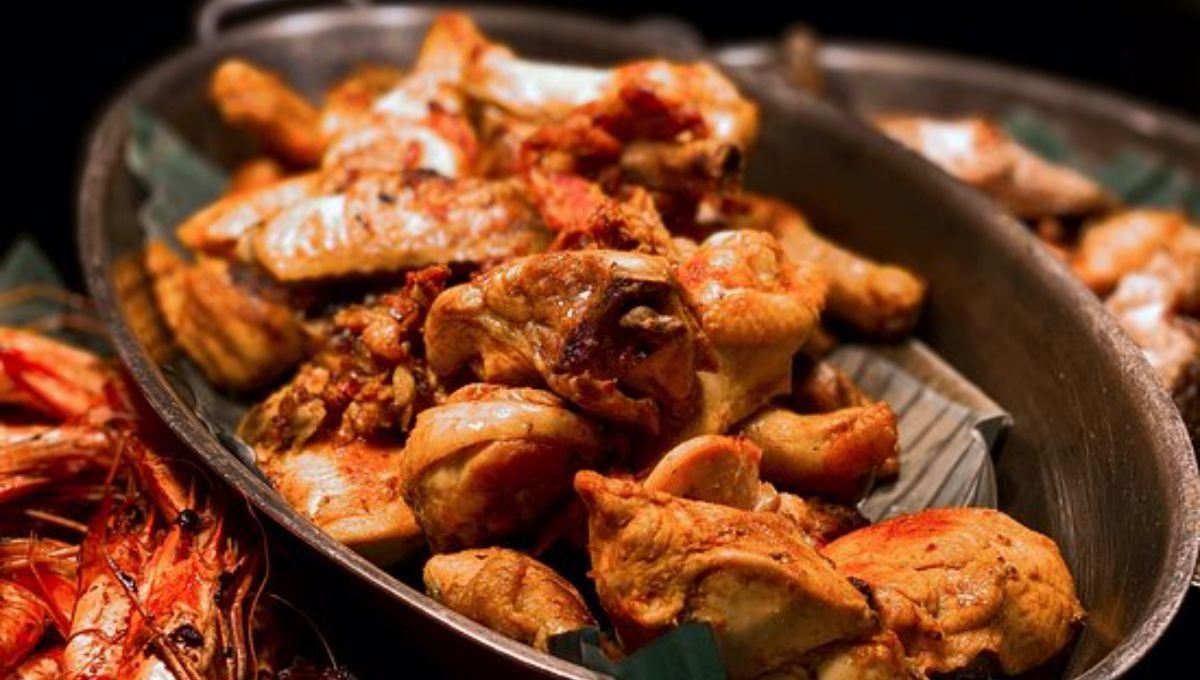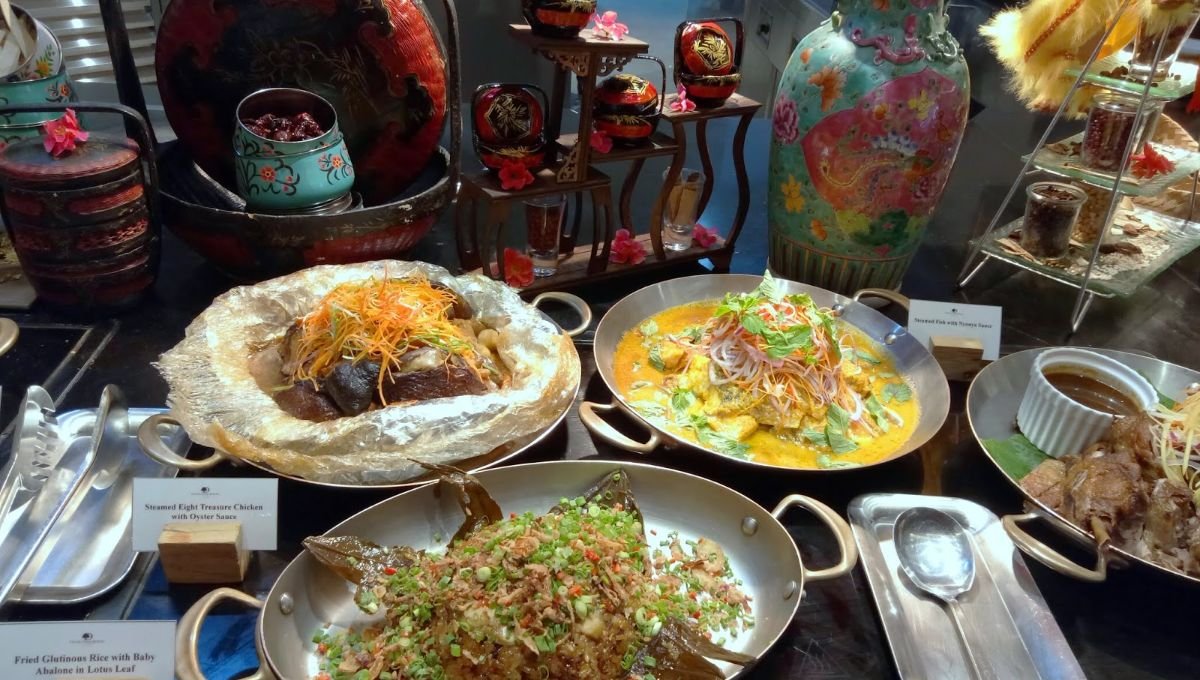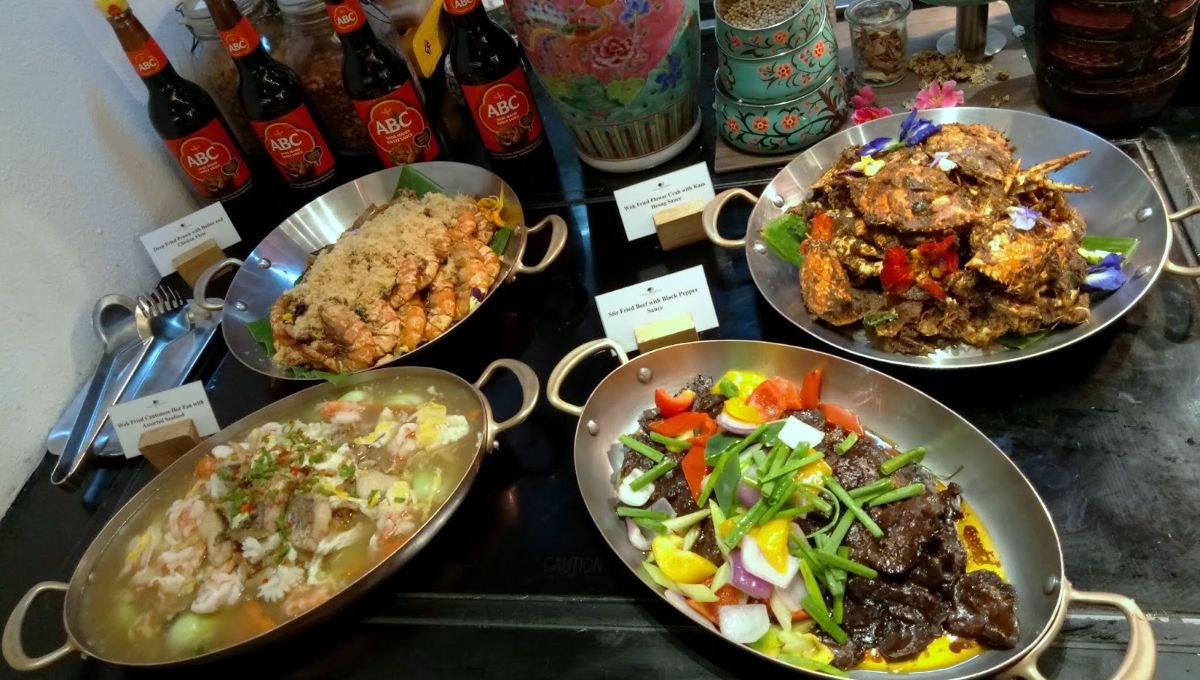Hawker and food centers in Singapore are very much alive and bustling, as UrbanWire discovers from ordinary (and hungry) folks.
Photo Essay
Hawker centers – It’s the shouting of drink orders, long queues, and the scraping of woks in cramped stalls. But it’s also digging into delicious food from chicken rice to Indian rojak and satay. Mention “hawker centers” to Singaporeans, and chances are they’ll inspire a smile.
But the hawker centers you see weren’t always like this. They first began as illegal pushcart stalls run by migrants for other migrants and provided cheap food plus other services in early colonial Singapore. To combat disease and roadside clutter, these stalls were later legalised by the government in the 1970s and were shifted into our current open-air complexes. (Photo Credits: pHpBB Forums)
But as times change, so does Singapore’s landscape. With the rise of novel food destinations with comfortable facilities, what exactly do traditional hawker centres mean to today’s Singaporeans? UrbanWire goes on a short hawker trail to uncover their views in Makan Mentions.
Tiong Bahru Market & Food Centre
Originally comprising 2 converted shophouses along Tiong Poh Road, this hawker area later became Seng Poh Road Market in 1951 – a simple complex of wooden stalls with zinc roofs.
In 2006, it reopened as Tiong Bahru Market & Food Centre, which arguably houses one of the most ‘heritage hawkers’ stalls. Currently, it possesses over 20 food stands over 30 years old with at least 15 dating back to the 1950s!
#1 –Ebel Lim Dao Xiang, 28, PWC consultant and Dionne Ng Wen Xuan, 28, RWS marketing executive
The UrbanWire first interviewed a young couple. For Ebel Lim Dao Xiang, 28 (right), he felt that hawker centres were currently threatened by rising affluence in Singapore. He said,”… people eat better, they want more comfortable surroundings.”
Ebel found it a pity. To him, hawker centres have held an eclectic mix of people, food, plus “Singlish and dialects that you hear here”. However, he remained optimistic, saying that as long as we preserved the “key hawker centres”, their iconic presence would still be felt in the nation.
His wife, Dionne Ng Wen Xuan, 28, felt that hawker centres were also important places that spawned childhood memories. For herself, they were where she ate fish beehoon and drank Milo with her grandfather and family every weekend.
Dionne said with a sad smile, “Especially for the older generations, they will definitely miss bringing [their families here]. Cos’ the younger generation nowadays, they’re mostly brought to [places] like Macdonald’s for breakfast and stuff like that.”
Besides the distraction of fast food and other eating places, hawker centres are also currently facing threats like increasing costs of operation and slowing stallholder replacement rates. Despite the recent Hawker Master Trainer Pilot Programme by the Workforce Development Agency, plans to have veterans pass down their skills to others have been met with resistance even from the older hawkers. Many want to want to pass down their receipes within their family- but that is also a problem for not all of their descendants are interested in carrying on their businesses.
So are hawker centres set to die out soon? Let’s move onto Chinatown Complex to find out.
Chinatown Complex Market & Food Centre
Established in 1983, Chinatown Complex went under upgrading in 2008 for greater hygiene and seating capacity. Not many hawker complexes are as extensive as this one, which boasts over 260 stalls specialised in traditional Chinese and dialect-originated food. Despite its quiet exterior, the one-stop multi-level complex thrives with food stands and countless shops selling anything from ethnic clothing to prayer items.

#3 Ms Usha Kaur, 39, homemaker
Mr Taranjit Singh, 43, health and safety manager in the offshore industry
Meet Mr Taranjit Singh, 43 (left), a regular hawker centre hopper. Indeed, food hunting remains a national pastime for many Singaporeans too, and it was found that hawker centres have long been the favourite alternative for many to delight in the discovery of good food at affordable prices.
Taranjit said, “Going to the mall, you get more food but it’s all frozen stuff. Coming to the hawker centre, you get naturally cooked food. Well, it’s fresh, it’s worth your money. It’s not too expensive.”
For his wife, Ms Usha Kaur, 39, she felt that hawker centres were not just treasure troves of food but also indispensible places that held our national identity.
She gestured to the Chinese dominated complex around her, and then to the Chinese dishes before her. “Hawker centres- I think it still holds a very important role in our society. There’s a lot of food that other cultures eat- if hawker centres were not around, I don’t think we would even know [they existed].”
With that, we move onto Mr Ko Thean Kuei, who was having zi char (a la carte Chinese and dialect dishes) in another section of Chinatown Complex.
#4 – Mr Ko Thean Kuei, 62, self-employed in information and security with his retiree friends all aged in their sixties
Eh, eh, union leader!” shouted a friend, who gleefully volunteered Thean Kuei (extreme bottom left) for the interview.
“His name is 5 ‘o clock something, Goh Thiam Pui (in Hokkien).” interjected another with a laugh.
Thean Kuei joked, “We meet every week to catch up, mark attendance. To see whether they’re still there, whether they’re still around.”
For him and his friends, Chinatown Complex was special as it was near their old workplace- the Police Force in People’s Park. To Thean Kuei, hawker centres remained a favourite meetup point, for their no-frills environment brought together people of all social backgrounds and classes.
He commented, “I think hawker centres are more informal. You can [also] dress as you like…talk at the top of your voices [unlike in] restaurants. It’s more carefree.”
#5 – The Loh Family
However, not everyone favours these open-air complexes.
“I don’t really like hawker centres,” stated Ms Loh Suan Ze, 20 (bottom right), as she picked begrudgingly at her fried rice.
For her father, Loh Kia Yong, 61 (upper right), it was all about the positives. He said, “She likes air [conditioned] places like food courts. Well, for me, I like hawker centres. There’s [overflowing] diversity in the food and in terms of price, [it’s] very reasonable.”
Indeed, the Loh family show how the humid and sometimes dirty hawker centres do not sit well with some people- especially those from the younger generation.
Also, the Lohs revealed they had come to Chinatown Complex to look for Japanese food. They represent a rising number of Singaporeans who demand international alternatives in our local hawker centres. Indeed, hawker stands offering Western to Korean food have gained great popularity- with some even edging out local stalls.
#6- Mr Sam Wong, 58, technician in a motor firm
For a deep lover of hawker centre culture like Mr Sam Wong, 58, all this was a huge cause for worry. When The UrbanWire found him, he was queuing faithfully for his weekly boneless chicken rice – which he said could only be done on Saturdays due to the distance of his workplace.
He began pointing out the different good stalls and rattled off his recommendations with deft speed. “And there’s Hong Lim Park too [with the] soy chicken noodles.” He closed his eyes in a moment of appreciation. He exclaimed, “Fantastic. I love it!”
For Sam, queuing was part of a neverending quest to uncover authentic dishes that would bring back the taste of his childhood.
He lamented, “We don’t have an identity at all now. Food is changing style already- they add in fusion…where the flavour is going to be lost. [They add this] to make it brand new, to attract youngsters.”
Sam also expressed his wish for Singaporeans to remember a time when hawker centres were more than just places for quick food fixes. He said, “Here you see, you just eat alone and then walk off. Last time. you normally stay around and talk to the [stallholders].”
Much like its two counterparts, this 28-year old hawker centre boasts many local delicacies. Some famous dishes here include Lim Hai Seng carrot cake and Seng Bee’s Hainanese Chicken Rice.

Mrs Candees Choo, 34, working in human resources in Raffles Place
We find Mrs Candees Choo, 34 (extreme left), who came with her family to AMK every Saturday for its famous tender duck rice. To her, the convenience of hawker centres was increasingly important for Singaporeans, whose small family sizes and business made cooking at home a less sensible option.
She said, “It’s part of our lives already. Yes, we always eat outside.” She also shared that she made it a point to gather her family to bond over meals. Why does she do that? Her philosophy is simple: “So that next time when your children grow up, they will also know how to bond with their parents.”

Ms Ivy Teo, 52, recently let go of her own venture
We last go to Ms Ivy Teo, 52, who was queuing for her takeaway dinner at a roasted duck stall.
On her views on hawker centres, she said in Mandarin, “I just returned from a trip from America, and I really missed my hawker centres. I’m proud…because we have such a rich food culture- whether you like it spicy or sour, you can get anything here.”
However, she grew momentarily serious. “…I am a little worried about our constantly increasing prices…Eating is a daily necessity and hawker centres are already the cheapest, most common alternative place for us. “
“[But] as long as our prices remain reasonable with the times, I’d say we’re already very blessed.”
Conclusion
So as the UrbanWire has found out, hawker centres still hold special meanings to different people and an intrinsic beauty that most still recognize. So what lies for them ahead? We may not know. But their challenge is to remain relevant in meeting the economical, physical and emotional needs in a changing local landscape. With that, we leave you with some food for thought: so what do hawker centres mean to you? This has been Zhi Xin with Makan Mentions, reporting for The UrbanWire.

